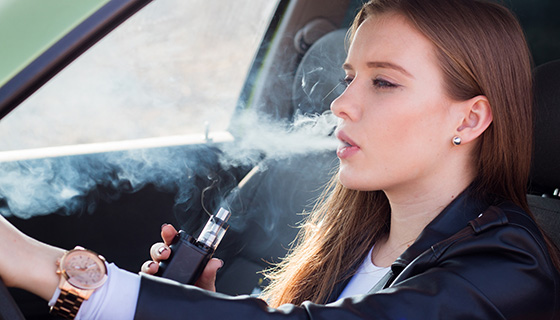Understanding the Healing Process of Lungs After Vaping: A Comprehensive Guide

Vaping, once touted as a safer alternative to traditional smoking, has raised concerns about its potential health impacts, particularly on respiratory health. As individuals become more aware of the potential risks associated with vaping, a common question arises: How long does it take for the lungs to heal from vaping?
How long does it take for your lungs to heal from vaping?
In this comprehensive guide, we will explore the effects of vaping on the respiratory system and delve into the healing process that the lungs undergo after individuals decide to quit.
The Impact of Vaping on Respiratory Health:
Before we delve into the healing process, it’s crucial to understand how vaping affects the respiratory system. Vaping involves inhaling an aerosol, often referred to as vapor, produced by an electronic cigarette or other vaping devices. The vapor typically contains nicotine, flavorings, and other chemicals, some of which may be harmful.
- Inflammation and Irritation: Vaping has been associated with inflammation and irritation of the airways. The inhaled substances can trigger an immune response, leading to swelling and irritation in the respiratory tract.
- Reduced Lung Function: Studies have shown that vaping can lead to a reduction in lung function. The ingredients in e-cigarettes can cause damage to the small air sacs in the lungs, impairing their ability to exchange oxygen and carbon dioxide efficiently.
- Increased Risk of Respiratory Infections: Vaping has been linked to an increased risk of respiratory infections. The compromised immune response and irritated airways make individuals who vape more susceptible to infections such as pneumonia and bronchitis.
The Healing Process:
Now that we understand the potential adverse effects of vaping on the respiratory system, let’s explore the healing process that occurs after an individual decides to quit.
- Immediate Changes: The body begins to repair itself almost immediately after quitting vaping. Within hours, the heart rate and blood pressure start to normalize, and the levels of carbon monoxide in the blood decrease.
- Inflammation Reduction: As vaping-induced inflammation subsides, the airways start to relax. The reduction in irritation allows for improved airflow, making breathing easier.
- Lung Tissue Repair: Over the first few weeks and months, the lungs undergo a repair process. The cilia, tiny hair-like structures that line the airways and help remove mucus and debris, begin to recover. This recovery enhances the lungs’ ability to clear out irritants and reduces the risk of infections.
- Improved Lung Function: With time, lung function improves as the damaged cells regenerate. The small air sacs, known as alveoli, regain their elasticity, facilitating better oxygen exchange.
- Reduced Risk of Respiratory Infections: As the immune system strengthens and the respiratory tract heals, the risk of respiratory infections decreases. The body becomes better equipped to fend off pathogens, contributing to an overall improvement in respiratory health.
Factors Influencing Healing Time:
Several factors can influence how long it takes for the lungs to heal from vaping:
- Duration and Intensity of Vaping: Individuals who have vaped for an extended period or at higher intensities may experience a longer healing process compared to those with a shorter vaping history.
- Individual Health: The overall health of an individual plays a crucial role in the healing process. Individuals with pre-existing respiratory conditions or compromised immune systems may take longer to recover.
- Lifestyle Choices: Healthy lifestyle choices, such as regular exercise and a balanced diet, can positively impact the healing process. These factors contribute to overall well-being and support the body’s natural ability to repair itself.
Conclusion:
Quitting vaping is a significant step toward improving respiratory health, and the body has a remarkable ability to heal itself. The exact timeline for lung healing can vary from person to person, but with determination and support, individuals can experience positive changes relatively quickly. It’s important to consult with healthcare professionals for personalized advice and support during the quitting process. Additionally, adopting a healthy lifestyle can further enhance the healing journey and contribute to long-term respiratory well-being.
